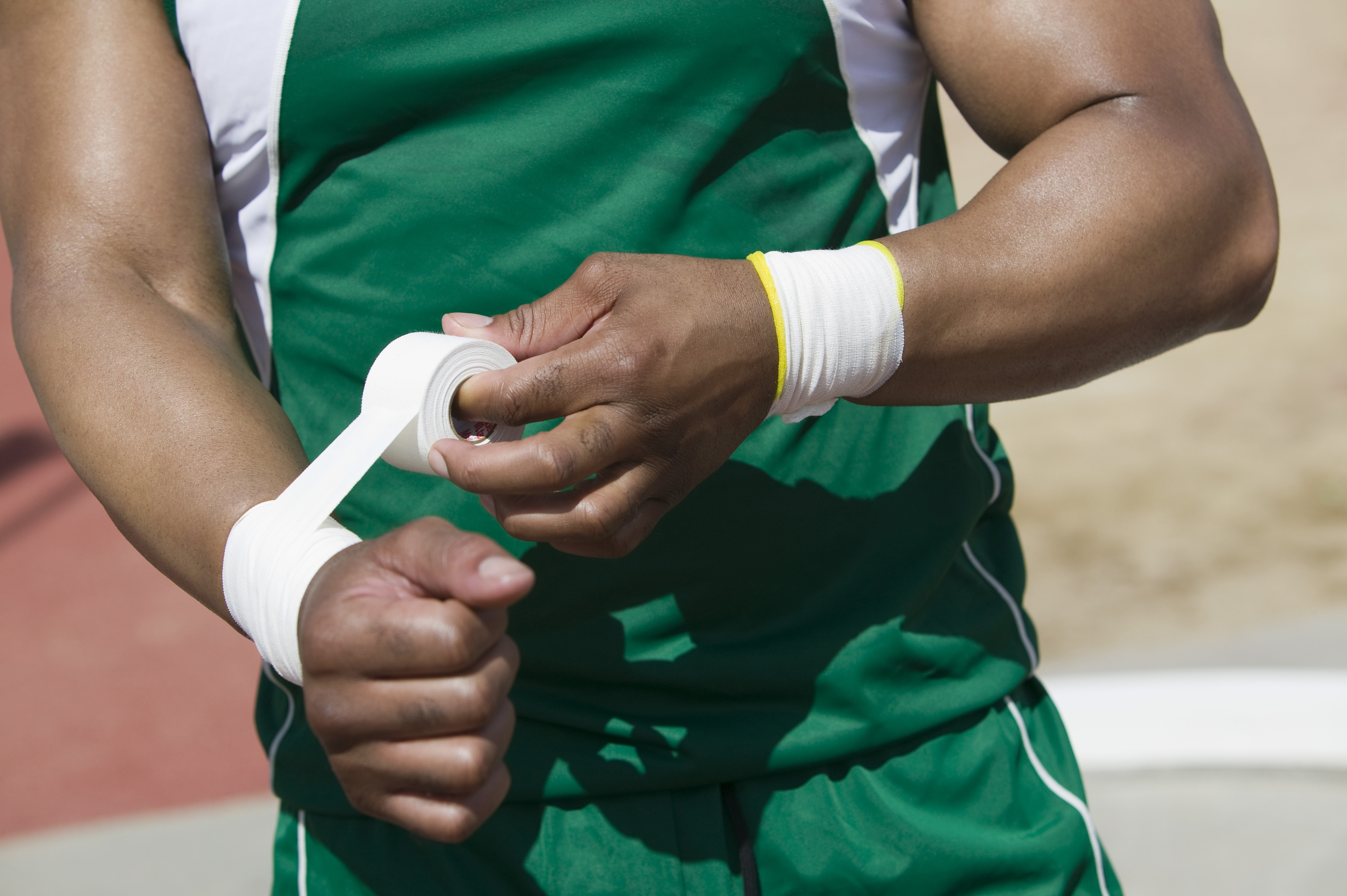How To Tape A Wrist

There are a variety of wrist taping techniques that will have your wrists feeling supported and stabilized before partaking in sports and activities.
If you’re suffering from wrist pain, it can be tempting to pop a couple of ibuprofen and hope that the pain goes away on its own. Although this might provide some relief in the short term, the only way to ensure that your wrist pain goes away for good and doesn’t come back is by taking care of it properly and applying the proper tape to your wrist before you play or train.
Follow these steps to learn how to tape your wrist correctly so that you’ll be on your way to getting back in the game faster than ever.
Get An X-Ray
If you think you might have broken your wrist, the first step is to get an X-Ray. This will help your doctor determine the extent of the injury and whether or not you need surgery. Once you have the results of the X-Ray, your doctor will be able to give you a better idea of what kind of treatment you need.
If you have a broken wrist, one of the best things you can do is wrap it in an ACE bandage. This will help stabilize the bone and provide support while it heals. Be sure to wrap the bandage snugly but not too tightly.
Choosing The Right Tape
You want to make sure you use the right type of tape for your sport. For volleyball, you need tape with a good adhesive that can hold up against the rigors of the game. You also want a strap that is comfortable and won't rub your skin raw. The technique you use is also important. Make sure you don't wrap the tape too tightly or leave it on for too long. Your goal is to just take the pain away, not cut off circulation.
Apply The Tape Correctly
You will need to use athletic or kinesiology tape, and the process is relatively simple. Start by cutting a strip of tape that is about twice the length of your wrist. Then, apply the strip of tape horizontally across your wrist, making sure that the end of the strip meets in the middle of your palm.
Once the strip is in place, use your other hand to apply pressure and smooth out any wrinkles or bubbles. Finally, cut off any excess tape. It should be just long enough so that it covers the joint but not too long where it starts to overlap with itself. If you're playing sports and need to keep your wrists stabilized, sometimes it's best to wrap both of them. If you do not have enough tape for both wrists, then make sure you alternate hands when applying them. It may take some time to get used to taping one’s own wrists because it can be difficult to get an even amount of tension on both sides. If you don’t get it the first time, keep practicing.
Tape It Everyday, Not Just Before Game Day
The best way to prevent an injury, especially if you're active and playing sports, is by taping your wrist every day. This will help support the joint and decrease the amount of stress on the ligaments. Make sure to clean the area before you apply the tape.
To recap on how to tape your wrist for the most support, apply the first strip of tape horizontally across your wrist. Start in the middle of your palm and go all the way around your wrist, ending on the inside of your arm near your elbow.
Apply a second strip of tape vertically, starting on the inside of your arm near your elbow and going all the way down to cover the first strip of tape. Finish by wrapping the third strip of tape around your wrist like a bracelet.
Remove The Tape At Night
Before you go to bed, remove the tape from your wrist. This will give your skin a chance to breathe and prevent irritation. If the tape is particularly tight, you may want to soak it in warm water for a few minutes before removal. Gently pull the edges of the tape away from your skin, taking care not to rip any hair out in the process. Once the majority of the tape is removed, use rubbing alcohol or an adhesive remover to break down the remaining glue. Finally, wash your skin with soap and water.
Benefits Of Wrapping Your Wrists With Tape
Wrist injuries are common in many sports, but can also occur due to overuse or repetitive motion in daily activities. Taping your wrists can provide support and stability to the joint, helping to prevent further injury. It can also help relieve pain and swelling from an existing injury.
Final Thoughts
Wrist strapping can be a great way to bring increased support to the wrist. While wrist taping might seem confusing at first, throughout repetition, it’s something that will become like second nature. Taping a wrist can help relieve pain from a broken bone or strained ligament.

